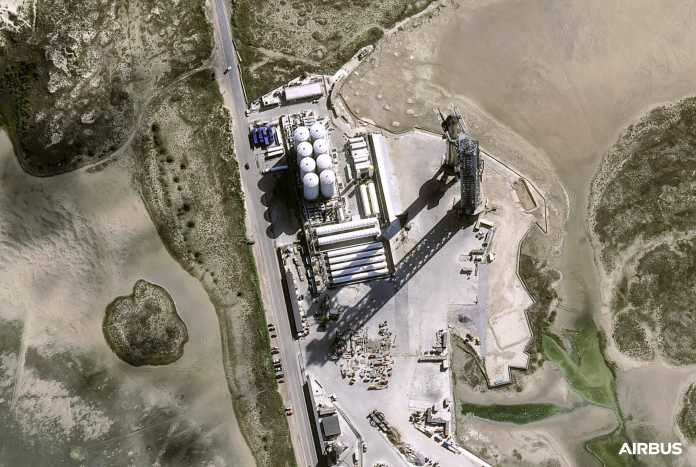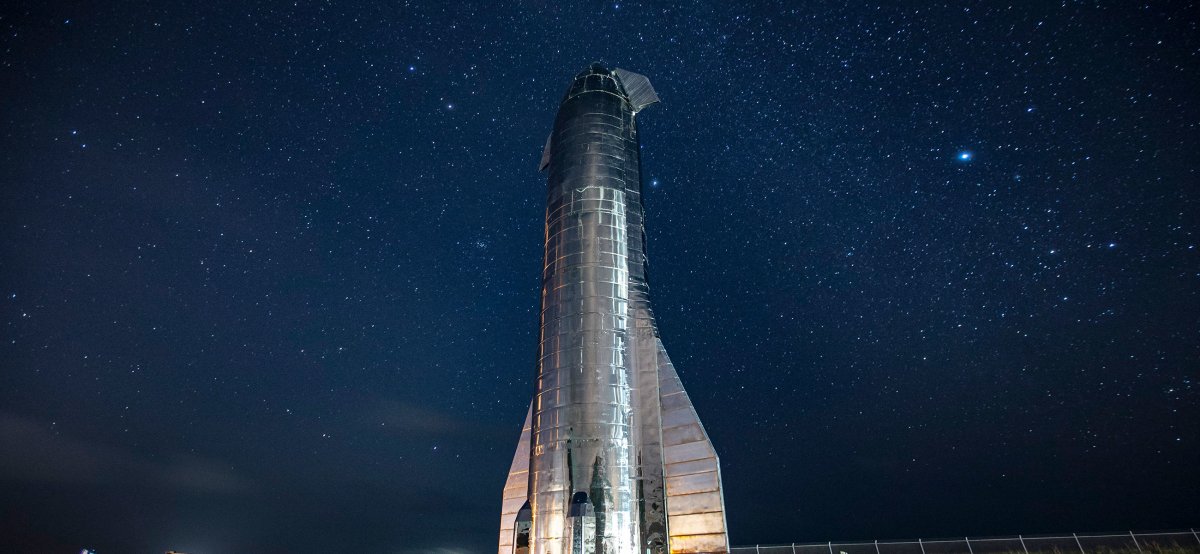Expected on Monday, April 17, 2023, Starship will embark on its first test flight into orbit: the largest and most powerful rocket ever intended to be used by humans to colonize Mars. Space fans have been waiting for this for two years, since the first take-off and landing tests of the upper stage. But the history of SpaceX development goes back much further.
Elon Musk wants to go to Mars as early as 2001. He was 30 years old at the time. In 2002 he founded SpaceX. Six years later, the Falcon 1 rocket made its maiden flight into orbit. Her take-off thrust is around 200 times less than today’s Starship. But plans for the giant rocket are already flourishing. Raptor-type engines should make them highly efficient and reusable. In 2012, Raptor will switch from liquid hydrogen to methane – the fuel can also be obtained on Mars. Several renamings follow: from the Mars Colonial Transporter (2013) to the Interplanetary Transport System (2016) and the Big Falcon Rocket (2017). At the end of 2018, the name “Starship” and the steel construction with controllable flaps were finally decided.
The first Starship flew 20 meters high
The developments and test flights are as iterative as the plans. In Boca Chica, a tiny village on the Texas coast, the first prototype “Starhopper” takes off on July 25, 2019: The 20 meter high and nine meter thick tank reaches a height of 20 meters with a Raptor engine and lands on its legs again – Basic requirement for the reusability and cost reduction, which Musk is pursuing with Starship as with his Falcon rockets. A few weeks later, a second “hop” goes up to 150 meters. The landing is successful again.
For the Starship upper stage, further developed 50 meter high prototypes, each with three Raptors, are designated with “SN” (serial number). The first ones are destroyed during ground tests or complete more hops. First SN8 flies on December 9, 2020 at an altitude of 12.5 kilometers. On the return flight, the “belly flop” succeeds: thanks to the control flaps, SN8 turns into a horizontal position. In this way, the air – and later the Martian atmosphere – slows down better. Then SN8 rotates back to vertical. Shortly before the ground, the Raptor engines fire. They don’t brake enough because the tank pressure is too low. The missile hits the ground too quickly and explodes.
A few weeks later, SN9 flies similarly high – but this time the rocket rotates too late before landing, two Raptors are supposed to fire, only one ignites. SN9 hits at an angle and is destroyed. Musk practices self-criticism: It was “stupid” not to ignite all three engines for the landing and, when they are all running, to switch off one of them again. On March 3, 2021, SN10 finally landed successfully. Three raptors fire, two shut down again, and finally the missile dances on a raptor beam until it touches down. But minutes later, a leak leads to another explosion. A breakthrough is a long time coming: SN11 explodes in the air even before landing. After many improvements, only SN15 flies – and on May 5, 2021 everything works including landing.
What the robotic gripper has to do with Godzilla movies
The tests of the entire Starship continue for SpaceX. The much more powerful lower stage, the “Super Heavy Booster” with 33 Raptor engines, does not start at first. The third prototype, Booster #3 (BN3), will undergo ground testing in July 2021 with three Raptors. In August, an entire Starship rocket will be on the pad for the first time, at 120 meters ten meters higher than the former Saturn V moon rocket. But it is only a “fit test” – the levels are separated again. The assembly of “Mechazilla” begins at the 145-meter-high starting tower: Musk baptizes a robotic gripping mechanism, based on the monster Mechagodzilla from the Godzilla films. He is supposed to catch the landing steps – because, as the first test flights showed, landing legs were not the best solution. After much testing, the grab and crane mechanisms work to assemble the Starship stages. However, Mechazilla will not yet be used for the upcoming orbital flight.

(Bild: Airbus DS 2023)
The year 2022 brings many further developments and tests on the ground: the upper stages come up to serial number 24, the boosters up to BN7 – the combination that will now also fly. Improved Raptor 2 engines emerge. And the US Federal Aviation Administration (FAA) ended its environmental assessment for the Boca Chica site after many months – and imposed many conditions on SpaceX. Musk is having a second Starship launch facility built in Cape Canaveral, Florida. During the booster tests, more and more engines are igniting – until finally, on February 9, 2023, 31 of 33 engines with reduced thrust are working successfully in the test stand. Technically, SpaceX is ready for the first orbital flight and has now also received the FAA license for the first flight: a circumnavigation of the earth with water landings of both stages.
Billionaires on board, please
What comes next? Musk doesn’t expect quick wins. Many more orbital test flights will follow before humans fly the Starship. SpaceX manager Gwynne Shotwell spoke of at least 100 if possible, but they can transport cargo and satellite payloads or even be used to collect space debris, as Musk suggested in 2021. One of the first manned flights will be the “Dear Moon” mission, a lunar orbit with Japanese billionaire Yusaku Maezawa and eight international artists. Jared Isaacman, who brought a purely private crew into space for the first time with SpaceX as part of the Inspiration4 mission in 2021, also wants to fly a mission with the Starship in his next Polaris project. Thanks to an order from NASA, the lunar surface will then also be the target of a Starship and finally Mars – at the earliest in 2029, according to Musk.

(jl)

